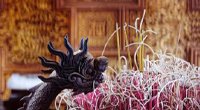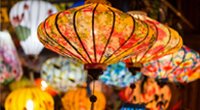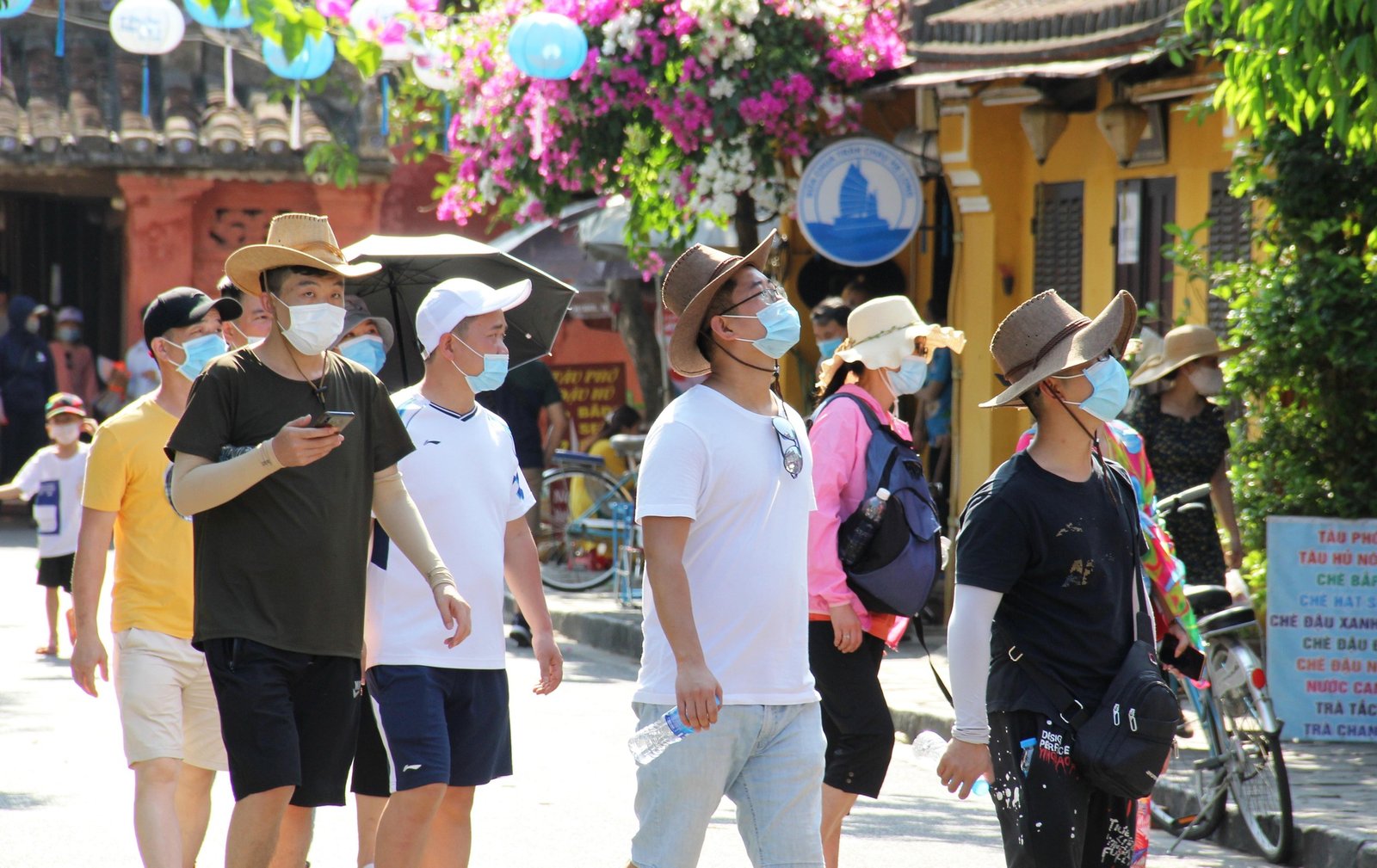Contents
ToggleIntroduction to the Temple of Literature: A symbol of learning and culture
The Temple of Literature is one of Hanoi’s most cherished landmarks, known for its historical, cultural, and educational significance. Established in 1070 by King Lý Thánh Tông, it was originally built to honor Confucius, the revered Chinese philosopher and educator. Confucius’ principles on morality, governance, and education deeply influenced Vietnamese culture, and this temple was created as a place of learning and reflection.
In addition to honoring Confucius, the Temple of Literature served as the site of Quoc Tu Giam, the first university in Vietnam, which was founded in 1076. Over the centuries, the temple became a symbol of intellectual achievement, drawing scholars, educators, and students from across the country. Today, the Temple of Literature stands as both a monument to Vietnam’s past and a living tribute to the enduring values of education, scholarship, and intellectual growth.
Historical significance of the Temple of Literature
The Origins and Founding of the Temple of Literature (1070 AD)
The story of the Temple of Literature begins in 1070, during the reign of King Lý Thánh Tông. The temple was originally constructed as a place of worship for Confucius and his disciples, and it was intended to reflect the growing influence of Confucian philosophy in Vietnam. As the capital of Đại Việt (ancient Vietnam) was moved to Hanoi, the Temple of Literature became a beacon of intellectual life in the country.
The Role of the Temple of Literature in Vietnamese Education
In 1076, King Lý Nhân Tông, the son of King Lý Thánh Tông, expanded the role of the Temple of Literature by founding Quoc Tu Giam, the first national university in Vietnam. The university’s goal was to train the future leaders of the nation in the Confucian ideals of morality, governance, and education. It also sought to promote the study of literature, philosophy, and Chinese history.
Quốc Tử Giám became a prestigious institution, producing generations of scholars and public officials who would play key roles in shaping Vietnam’s future. The connection between the Temple of Literature and Quốc Tử Giám symbolized the harmonious relationship between religion, education, and governance that helped guide Vietnam through centuries of political and cultural change.
Architectural Details of the Temple of Literature: A Testament to Vietnamese Design
The Temple of Literature is renowned not only for its historical importance but also for its stunning architecture. The design of the temple complex is a beautiful example of traditional Vietnamese architecture, which reflects Confucian values of balance, harmony, and respect for nature.
Key Structures Within the Temple Complex
The Temple of Literature is divided into two main sections: the outer district and the inner district. The outer district features the tranquil Giám Garden and the serene Hồ Văn Lake, both of which provide visitors with a peaceful environment to reflect on the temple’s legacy.
- The Main Courtyard: The heart of the temple complex, this large courtyard is home to the central pavilion dedicated to Confucius. Here, visitors can pay their respects to the great philosopher and admire the impressive architecture that surrounds them.
- Stelae of Doctors: Perhaps the most iconic feature of the Temple of Literature is the stelae of doctors—82 stone tablets that commemorate the names of scholars who passed the imperial exams from the 15th to the 18th centuries. These stelae rest on the backs of turtles, symbolizing longevity, wisdom, and protection, and are a key attraction for anyone visiting the temple.
- Pavilions and Shrines: Scattered throughout the temple complex are several smaller pavilions, each dedicated to different Confucian sages and scholars. The ornate designs, delicate carvings, and peaceful ambiance of these spaces provide visitors with a perfect setting for reflection and meditation.
Symbolism in the Architecture
The layout of the Temple of Literature is infused with symbolic meaning, reflecting Confucian beliefs in education, governance, and morality. For example, the Royal Way, a path that once served as a ceremonial route for the kings and nobility, leads visitors through the temple grounds, providing a sense of reverence and grandeur.
The turtles that support the stelae are also symbolic, representing longevity, wisdom, and strength. These turtles are sacred creatures in Vietnamese culture, and their presence in the Temple of Literature adds a layer of cultural significance to the architectural design.
How to Get to the Temple of Literature from the City Center
The Temple of Literature is conveniently located in central Hanoi, making it easy for visitors to access from major landmarks in the city. It is just a 2.5-kilometer walk from Hoàn Kiếm Lake, one of Hanoi’s most famous attractions.
Transportation Options
- Taxi or Ride-Hailing Services: Taxis and ride-hailing apps like Grab are widely available in Hanoi, providing a comfortable and quick way to reach the Temple of Literature.
- Public Transportation: If you prefer to take public transport, several bus routes, including 02, 23, and 38, pass by the temple. Buses are an affordable and convenient option for getting around Hanoi.
- Walking: For those staying in the Old Quarter or near Hoàn Kiếm Lake, the Temple of Literature is within walking distance. The walk takes about 20-30 minutes, passing through some of the most charming streets in Hanoi.
Parking Information
Visitors who prefer to drive to the Temple of Literature can find parking nearby, although spaces can be limited, especially during peak tourist seasons. It is advisable to use public transportation or taxis if you are not familiar with the area.
Visitor Information for the Temple of Literature
The Temple of Literature is open to visitors throughout the year, offering a chance to experience the beauty of this ancient site no matter the season.
Opening Hours
The Temple of Literature is generally open from 8:00 AM to 5:00 PM daily, except during some national holidays. For those interested in evening experiences, special night tours are available on Wednesdays, Fridays, and Saturdays, where visitors can witness the temple’s serene beauty illuminated by traditional lighting.
Entry Fees
The entry fee for the Temple of Literature is quite affordable, with discounted rates available for students, children, and groups. Make sure to check local listings or inquire at the entrance for up-to-date pricing and any special offers.
Best Time to Visit
The Temple of Literature is a year-round attraction. However, if you are lucky enough to visit during the Lunar New Year (Tết) or the Mid-Autumn Festival, you may be able to experience traditional ceremonies and festivals that add an extra layer of cultural depth to your visit. The temple is particularly beautiful during these times when its grounds are adorned with vibrant decorations and festive events.
Things to do at the Temple of Literature: A rich cultural experience
While visiting the Temple of Literature, there are several things to see and do to fully appreciate the site’s significance.
Key Attractions
- The Main Courtyard and Pavilion: Pay your respects to Confucius at the central pavilion and take in the grandeur of the main courtyard.
- Stelae of Doctors: Marvel at the stelae, which honor the scholars who passed the imperial exams, and reflect on their contributions to Vietnam’s intellectual history.
- Pavilions and Shrines: Explore the smaller pavilions dedicated to various Confucian sages and scholars.
Cultural Activities
If you’re looking for a more immersive experience, the Temple of Literature offers various cultural activities such as:
- Traditional calligraphy lessons
- Photography exhibitions
- Opportunities to participate in local festivals like Tết or Mid-Autumn Festival.
For those interested in deeper cultural exploration, guided tours are available, offering insights into the temple’s history, architecture, and the lives of the great scholars who shaped Vietnam.
Conclusion
The Temple of Literature is a must-visit historical site in Hanoi that offers a unique blend of intellectual history, cultural heritage, and architectural beauty. As a symbol of Vietnam’s long-standing reverence for education and scholarship, the temple provides visitors with a fascinating journey into the country’s past.
Whether you’re exploring the ancient halls of Quoc Tu Giam, admiring the stelae of doctors, or simply walking along the tranquil pathways lined with ancient trees, the Temple of Literature offers something for everyone. It is a place where history comes alive, and where the spirit of learning and wisdom continues to inspire all who visit.
Make sure to include the Temple of Literature on your Hanoi itinerary—whether you’re a history enthusiast, a cultural explorer, or someone seeking inspiration, this remarkable site promises an unforgettable experience that connects you to the soul of Vietnam.























